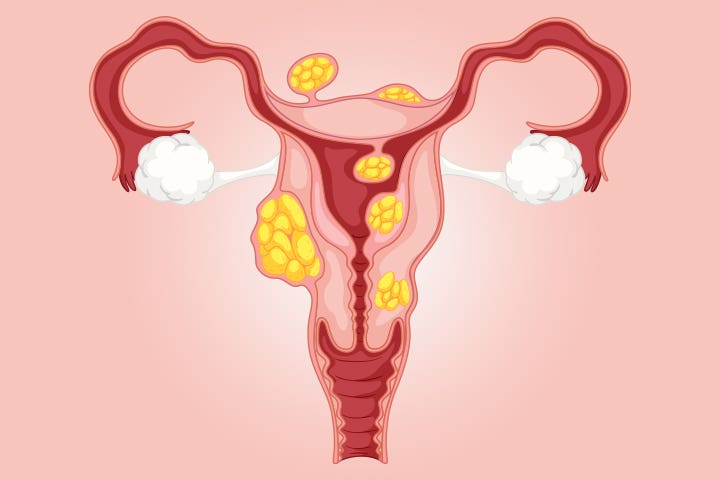Fibroids are non-cancerous muscular tumors that grow in the uterus during child-bearing years. They range in sizes from small ones – undetectable by the human eye to large ones that can form a bulge in the lower abdomen. Most of the time, gynecologists detect fibroids in McDonough during a prenatal ultrasound or your routine pelvic exam. There is often a lack of symptoms in most women, and in any case, they may include painful menstrual cramps, frequent urination, pelvic pain or pressure, heavy menstrual bleeding, and constipation. Fortunately, minimally invasive procedures like uterine artery embolization may relieve the symptoms.
Symptoms for uterine fibroids
Most women with fibroids can hardly tell because of the absence of symptoms. However, women with fibroid symptoms may experience:
- Heavy menstrual bleeding
- Constipation
- Pain or pressure in the pelvic area
- Periods that last more than seven days
- Frequent urination
The symptoms you have can be influenced by different factors including the size, number, and location of fibroids. Fibroids can develop within the uterine wall muscles (intramural), in the uterus
(submucosal), or outside the uterus (subserosal).
What causes fibroids?
Specialists are yet to establish a particular cause for fibroids, but according to doctors, these abnormal growths originate from a stem cell in the myometrium. One cell divides multiple times, creating a rigid mass of rubbery tissue known as fibroids. Their growth pattern varies as some get bigger rapidly and others slowly. Some stagnate in one size, and others undergo a growth spurt where they enlarge and shrink. Most of the time, fibroids that develop during pregnancy usually shrink or disappear after childbirth. Here are some of the factors linked to uterine growth.
- Hormones. During the menstrual cycle, the body produces estrogen and progesterone hormones which facilitate the thickening of the uterine walls. These hormones also promote the development of tumors since fibroids have more hormone receptors than other muscle cells. During menopause, the decline in hormone production causes the fibroids to shrink or disappear.
- Genetic changes. The genes in uterine fibroids differ from those in the normal uterine muscle cells.
- Extracellular matrix. The extracellular matrix makes cells stick together and also makes them fibrous. It is also responsible for cell changes due to its stores’ growth factors.
- Naturally occurring substances in the body, such as insulin-like growth factors, are linked to the growth of fibroids.
Treatment of uterine fibroids
There is no single treatment approach that is best for fibroids. There are multiple approaches, and the one your doctor recommends depends on the severity of your symptoms and your preference. For example, if you experience mild symptoms that you can tolerate or no signs at all, your doctor may recommend watchful waiting. They tend to grow slowly and shrink during menopause due to the decline in reproductive hormone production. Medications, minimally invasive procedures, and surgery are other treatment methods used to treat fibroids. Your doctor may help you understand the one that is best for you.
While uterine fibroids are usually harmless, they cause discomfort and can result in complications such as anemia, and sometimes interfere with fertility. Book a session with your doctor at Ideal Gynecology LLC for the diagnosis and treatment of uterine fibroids to improve your quality of life.





